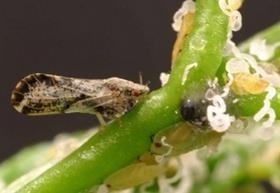
US Agriculture secretary Tom Vilsack has announced the availability of US$23m in USDA funding to support research and extension projects for producers fighting citrus greening disease.
Huanglongbing (HLB), commonly known as citrus greening, threatens the future viability of the citrus industry in the US, having infected more than 75 per cent of the Florida citrus crop.
The funding is available through the Citrus Disease Research and Extension Program (CDRE), part of the 2014 Farm Bill.
'Citrus greening threatens citrus production in the United States and other nations,' said Vilsack. 'It will take continued collaboration with growers, state governments, and researchers to find viable solutions to end this harmful disease. Only long-term solutions through research will help to stop this disease that threatens the livelihoods of thousands of citrus producers and workers and billions of dollars in sales.'
Since the initial detection of Huanglongbing in Florida in 2005, the disease has affected the vast majority of Florida's citrus-producing areas.
HLB has also been detected in Georgia, Louisiana, South Carolina, and small areas in Texas and one residential tree in California. It has also been detected in Puerto Rico, the US Virgin Islands, and 14 states in Mexico. A total of 15 states or territories are under full or partial quarantine due to the detected presence of the Asian citrus psyllid, a vector for HLB: Alabama, American Samoa, Arizona, California, Florida, Georgia, Guam, Hawaii, Louisiana, Mississippi, Northern Mariana Islands, Puerto Rico, South Carolina, Texas, and the US Virgin Islands.
The CDRE grants will be administered by the National Institute of Food and Agriculture (NIFA). NIFA will give priority to projects that are multistate, multi-institutional, or trans-disciplinary and include clearly defined mechanisms to communicate results to producers.
Successful applicants will be expected to engage stakeholders to ensure solutions are commercially feasible, and projects should also include an economic analysis of the costs associated with proposed solutions.
In fiscal year 2014, NIFA awarded US$23m to fight citrus greening through CDRE. Examples of funded projects include a grant to the University of Florida to develop a bactericide that can be applied to infected citrus trees to reduce or eliminate pathogens, a project at Kansas State University to develop a therapeutic delivery system that will prevent Candidatus Liberibacter asiaticus from infecting plants or prevent the development of HLB in infected citrus, and a grant at the University of California-Davis that focuses on using new genetic approaches to managing the Asian citrus psyllid that causes HLB.






No comments yet